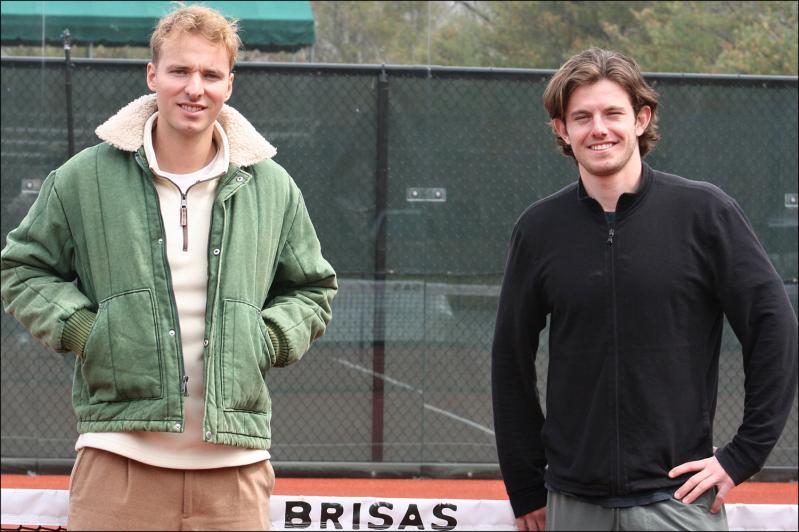Anyone who has played a racket sport, such as tennis, platform tennis, squash, racquetball, or pickleball, will be able to pick up padel readily, Eymeric Chevalier, a 28-year-old Frenchman who’s to manage the three glassed-in Brisas padel courts at the East Hampton Indoor Tennis Club this season, said during a recent conversation at the club.
Even a rank beginner will be able to catch on quickly to this fast-growing sport — “the fastest-growing one in the world,” Chevalier said.
“And the fastest-growing one in this country,” added Lucho Gazcon, who, along with Rohan Kamdar, introduced their concept of padel here to a receptive audience a year ago.
Asked how the first season went, Gazcon said, “It went really well. We built a really strong community and we were able to introduce a lot of people to the sport. Thirty percent of our bookings were for lessons and clinics, and we matched people up with their peers through WhatsApp chats so they could text people of similar levels and set up games. . . . In all, 4,000 people played.”
Brisas’s 10-by-20-meter, turf-surfaced, four-walled, lighted courts overlie concrete foundations, assuring that the
ball, which is slightly smaller and less inflated than the one used in tennis, bounces in a lively fashion. The game — whose scoring is the same as in tennis — combines the serving and volleying of tennis with squash’s off-the-wall shots. It originated in the Las Brisas neighborhood of Acapulco, Mexico, in 1969, and spread through South America and Europe before arriving in the United States. Gazcon said southern Florida is a particular hotbed in the U.S., with 25 or so padel clubs in the Miami-Boca Raton-Palm Beach area.
The net in padel is a bit lower than tennis’s, and the serves — a second one is allowed if the first lands outside the server’s box — are underhanded off a bounce with the ball struck below the waist. A salient rule is that the ball must bounce before it hits a side or back wall, which can be used to keep the ball in play. Finesse, not power, generally wins the day, leading to long rallies. Tennis players new to the game often have to suppress the urge to put the ball away posthaste.
Brisas’s website, brisas.us, has all the membership details. “It’s a semi public-private club now with a variety of memberships,” Gazcon said, “peak, off-peak . . . people can still drop by and play if we have an opening — nonmembers will be able to book inside of 24 hours, and access will be limited to six sessions. If you want to play more, you can become a member.”
Further, Brisas intends, said Gazcon, to hold tournaments this season, as well as camps for kids. Brisas, he added, will oversee play throughout the spring and summer, with EHIT managing the courts in the fall and winter. “Maybe at some point we’ll do a year-round membership with EHIT,” he said, adding that the club “has been introducing people to padel in the off-season.”
But Brisas was not just about the engaging sport of padel, said Gazcon, but also “about building community. The reason people love padel is because it’s very social. We have a very nice lounge next to the courts with furniture handmade by Mexican artisans. People don’t even have to play, they can just come and hang out, do ceramics, meditate. . . . You can always find Rohan walking around barefoot with a Super 8 or a Polaroid camera in his hand. Our chief aim is to bring people together.”







